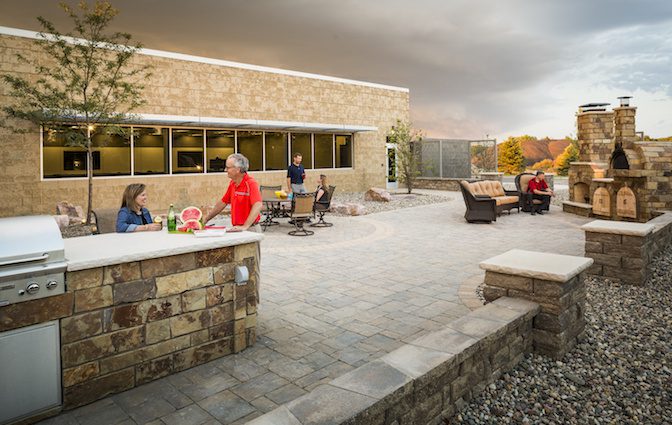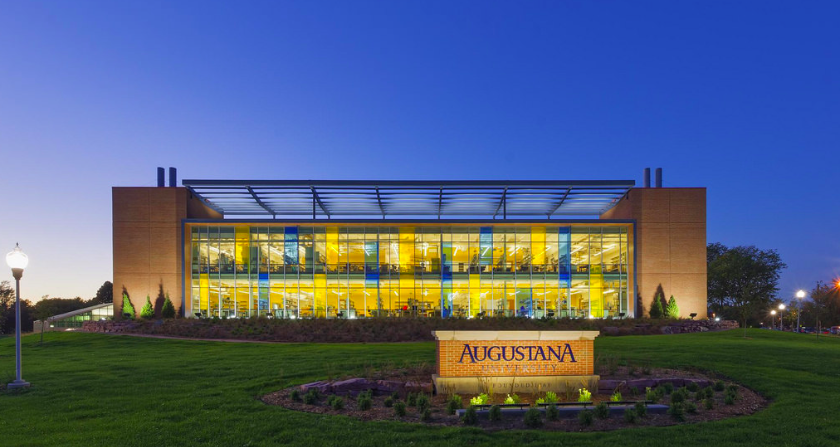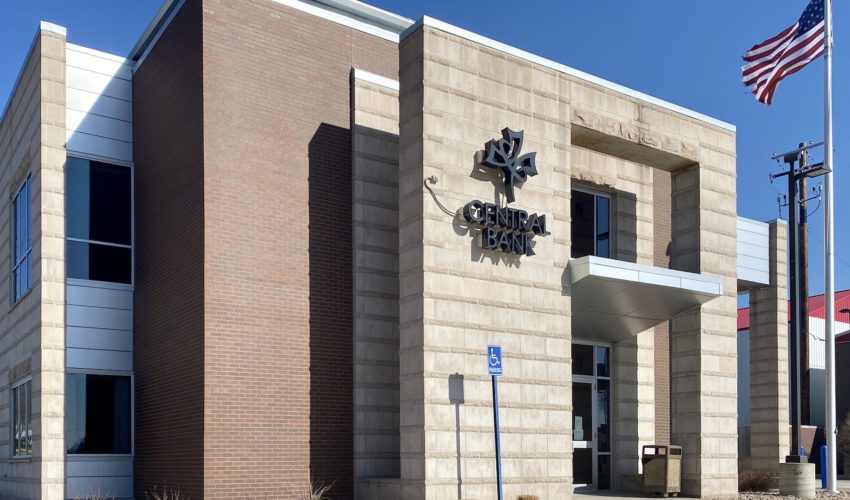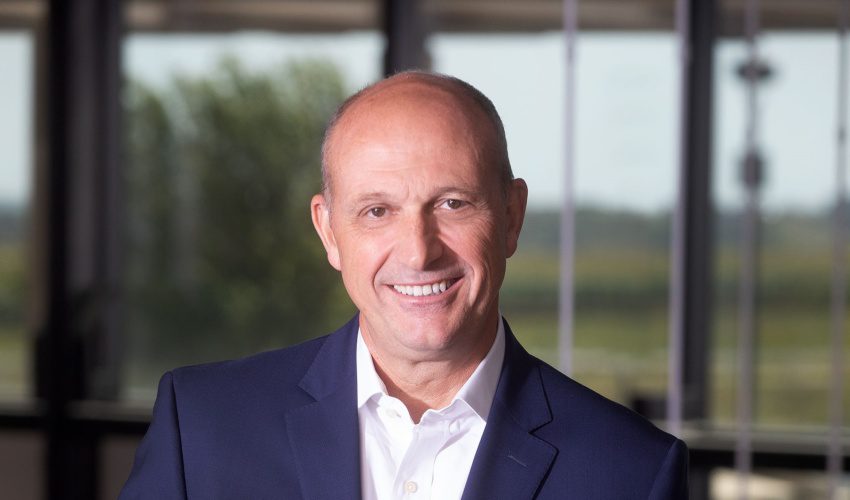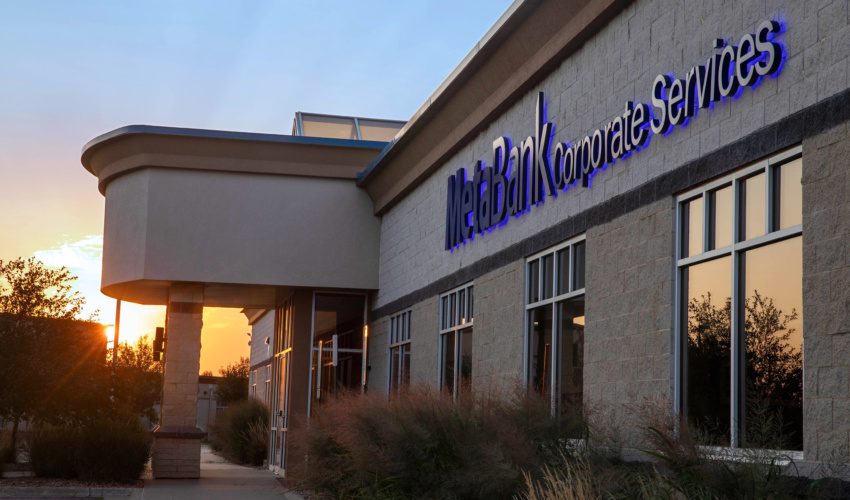The new green: Decreasing energy use while improving employee well-being
May 29, 2018
This piece is presented by TSP.
Business leaders rally around the idea of “going green” — especially because energy-efficient buildings create operational savings. They consume less electrical power and fuel, and they need less water. It doesn’t hurt that these improvements often generate positive feelings among potential customers.
To fully capture their return on investment on green initiatives, leaders must select the right options to fit their culture, market, and budget. They should consider intangibles along with a huge chunk of change that isn’t as commonly linked to sustainability practices: salaries and other personnel expenses, including the high price of employee turnover.
“Energy costs for a typical office building are about one to two dollars per square foot each year. Salary costs usually are 50 to 100 times that number,” said Roger Nikolas, an associate and senior mechanical engineer at TSP Inc.
“If people aren’t feeling good or they’re taking more absentee days because they just aren’t comfortable at work, those costs in lost productivity are going to outweigh anything you’d pay in energy bills. Nothing should trump comfort.”
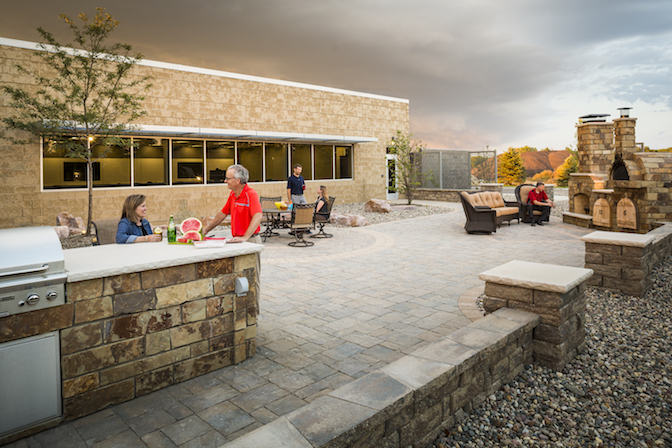
Concrete Materials’ corporate offices include an employee fitness center filled with natural light, a gathering space with kitchen and an outdoor patio constructed from the company’s products. The different spaces encourage well-being through healthy habits, social interaction and time outdoors.
Today, the concept of sustainable design extends beyond a building’s ecological footprint. Thoughtfully developed work settings, educational facilities and health care centers are not only better for the environment but also contribute to the well-being and happiness of the people inside.
The open, collaborative work space trend complicates the issue. Aside from disagreements over music and perfume, it’s challenging to balance the climate-control wishes of dozens of people — with their varied metabolic rates and clothing choices — all in the same, large room.
The human factor
The most efficient design and features aren’t sustainable unless people are willing to establish and maintain new habits. It’s true for a range of upgrades, from new Energy Star appliances in the break room to a small-scale building renovation or a complete overhaul of HVAC and electrical systems. LED lights, for example, are a smart choice for many buildings. But they won’t save as much on utility bills if fixtures aren’t turned off when everyone leaves the meeting room.
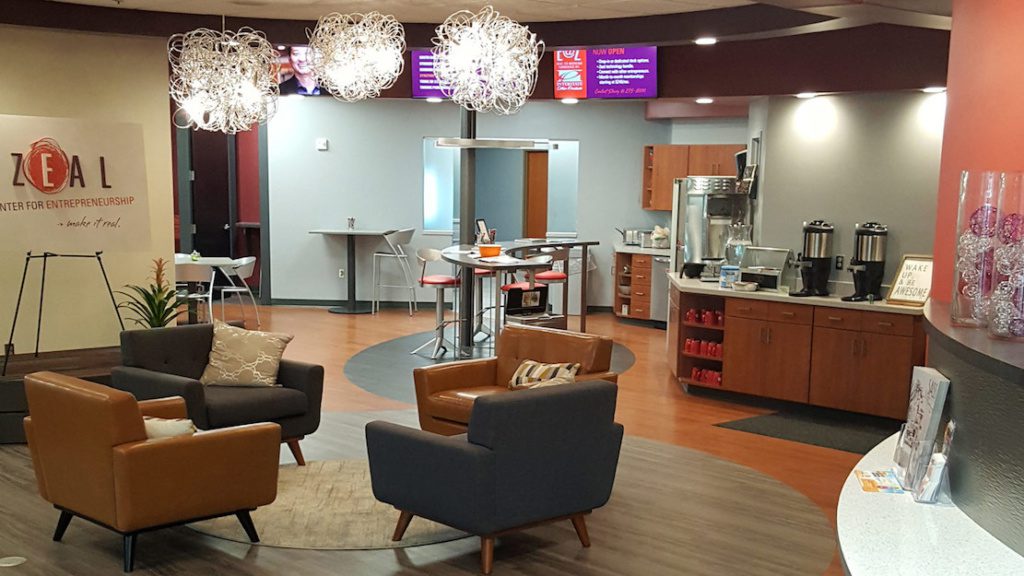
As part of a rebrand at the Zeal Center for Entrepreneurship, TSP designed a central break room with multiple seating and collaboration areas. Energy-efficient appliances conserve electricity and encourage employees to wash dishes rather than use paper plates and plastic utensils.
“The building can do the heavy lifting, but we need to support that by being conscious about how our daily activities affect energy and resources,” said Allison Dvorak, a TSP architect who also is certified in passive-house design. Those rigorous standards for airtight structures and minimal energy consumption exceed the LEED guidelines issued by the U.S. Green Building Council, or USGBC.
“If something isn’t a fit for how you run your business or it isn’t functional for your people, it’s going to become a burden. It’s something to check off a list instead of something that comes from an understanding of how people use a space and the resources there.”
Earlier this month, Dvorak co-presented a session on people-based sustainable design at the Rocky Mountain Green, a regional USGBC conference in Denver. Dvorak’s group showed how a person-centered approach to barrier-free design for individuals with disabilities results in better buildings for all users. Attendees included ADA consultants, architects, landscape architects, engineers and educators.
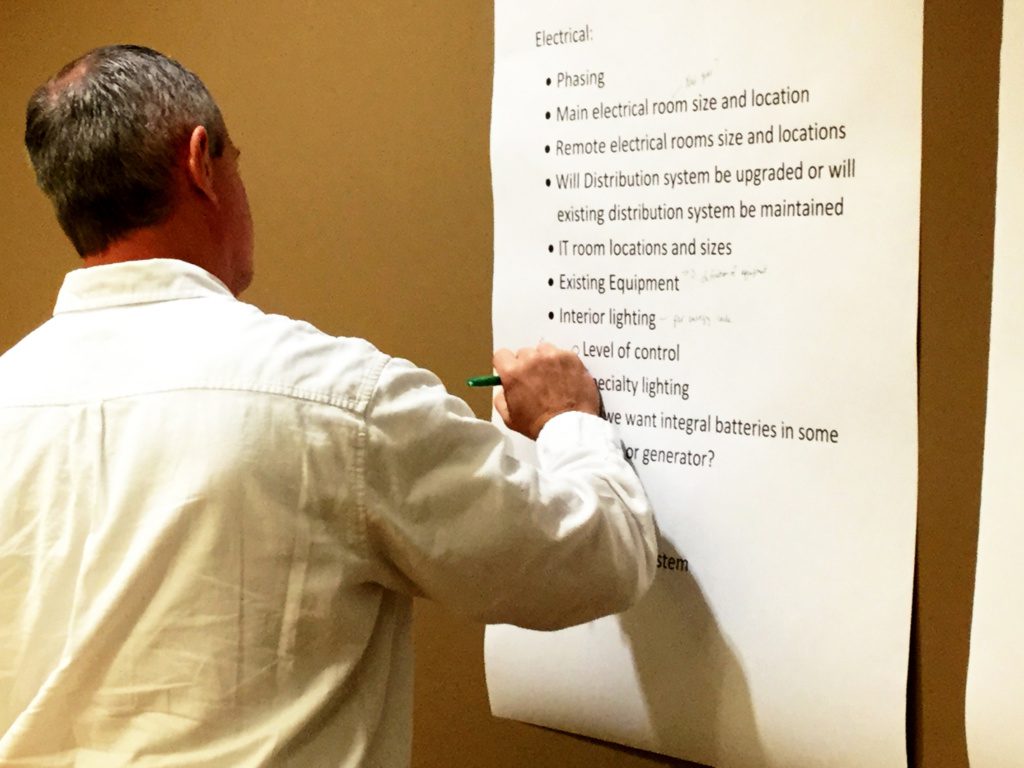
At the start of each project, leaders from various disciplines come together for a First 1% Meeting to discuss overall goals as well as strategies to address crucial design, engineering and occupant needs.
“This is a bit of a different approach,” Dvorak explains.
“It bases sustainability on how we take care of one another by respecting our common home — the earth. If we don’t do that now, we won’t have anyone or anything to take care of in the future. It’s a much more human focus. … We have to move beyond the mind-set that green and accessible designs are special accommodations and recognize that these changes benefit everyone’s experience.”
Changing perspectives
One of the most visible changes often is among the most popular with employees. Daylighting reduces the use of indoor lighting by bringing sunlight into a building. It also opens up the view for workers and makes your office or storefront more inviting to visitors. Additional or larger windows are the most common option, but some businesses take it a step further with skylights or interior wall systems whose glass panels allow light to penetrate far into central spaces.
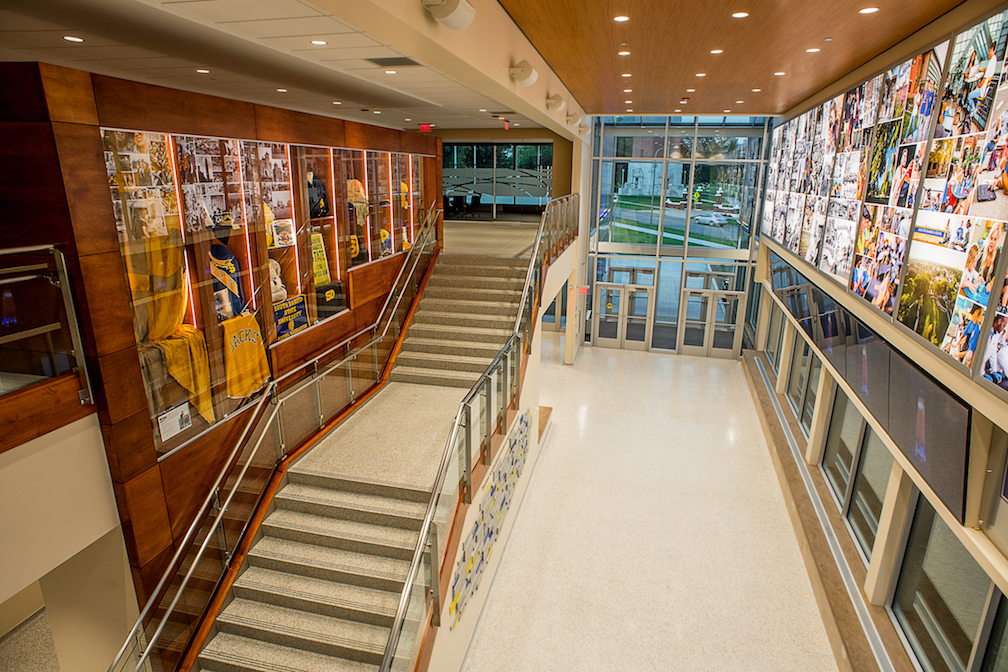
This wall of windows at the South Dakota State University Alumni Center offers a view of the Campanile. All that daylighting also reduces dependence on electrical fixtures. A memorabilia case and photographic installations invite people to take the stairs instead of the elevator.
“Maybe you’re still working within your same walls, but instead of arranging enclosed conference rooms or private offices around that perimeter, you’re looking for more opportunities to get light throughout the building,” said TSP principal and senior architect Michelle Klobassa.
A LEED Accredited Professional with an advanced Building Design + Construction endorsement, Klobassa notes that many clients want to incorporate green design principles but don’t want the full expense or checklist that LEED certification requires.
Even so, TSP has built a legacy of delivering greater value by exceeding owner expectations. Sustainability is no exception: Augustana University’s Froiland Science Complex was designed and submitted for silver-level certification but earned the higher gold certification at no extra cost. It’s TSP’s third project in South Dakota to accomplish that impressive feat.
“It’s interesting how this all has expanded,” Klobassa said. She has seen an unmistakable shift in the way her industry thinks about sustainability.
“In the 1990s, it was all about reduce, reuse, recycle. Now, we assume people already are doing those things, and we have to look at the next steps to keep improving the environment from a big-picture, holistic view.”
Getting started
How can you get the most efficiency out of your building while improving employee well-being? Here are a few ways to start.
Easy
- Let the sun shine in. Install additional windows to let daylight filter through your building and cut back on lighting costs. New glazing treatments and insulated panes ensure a tight seal so you don’t lose air to drafts.
- Make over your break room. Upgrade to Energy Star appliances. Consider a compact or drawer-style dishwasher and stock up on flatware and dishes as you pull back on the amount of paper, plastic and Styrofoam you order.
- Give people reasons to walk around and move. Create a seasonal outdoor patio for breaks and small-group meetings. Organize a lunchtime walk once a week. If you have a multistory building with an elevator, make your stairwells more attractive so people use them more often.
- Change air filters regularly. Filters loaded with dust create more resistance. This increases energy use, causing wear and tear on your building system as it works to push air through and maintain a consistent temperature.
- Switch to LED lighting. LED lighting reduces glare along with the flicker and hum sometimes seen with fluorescent bulbs. It also stays cool to the touch — unlike traditional incandescent bulbs — is suitable for a wide range of rooms and outdoor spaces, and consumes substantially less electricity.
- Set a temperature range. Your heating and cooling systems will cycle on more frequently if you choose a specific degree level. Instead, select a temperature range that will be comfortable for your building’s inhabitants. Adjust as needed so space heaters and fans don’t pop up at individual work stations, fighting against the building’s thermostat.
Moderate
- Schedule a retro-commissioning appointment. Mechanical, electrical and technology engineers can observe and test your building systems to see if HVAC, plumbing, wiring and cabling are performing as intended. They’ll make recommendations based on what they learn.
- Update your system controls. Darrell Bren, an associate and senior electrical engineer at TSP Inc., suggests automating lighting and mechanical systems with timers that “remember” for you. An electronic thermostat can maintain separate ideal temperature ranges for open and closed hours, for example. User controls can be set to allow employees to change the temperature within a predetermined range but not bump past a stated low or high. An electrical counterpart can turn off indoor and parking-lot lights that aren’t needed after the business day is done.
- Add occupancy sensors. “We’re designing occupancy sensors in new and remodeled buildings. These sensors automatically turn off lights when the space is not occupied,” said Bren, who also is a LEED Accredited Professional. “These work especially well in storage, meeting or breakout rooms. People enter and leave throughout the day, but in reality these areas are empty a major of the time.”
- Balance indoor and outdoor airflow. It’s important to bring in the right amount of outdoor air. Too little outdoor air may cause poor quality of indoor air. Too much, and you’re wasting energy to heat and pre-cool large volumes you don’t need for proper conditioning and airflow. Install or update sensors and dampers to regulate volume and help maintain temperatures.
- Add a variable-frequency drive to your system’s motors. Older HVAC systems move the same amount of air and water all day long and year round. Variable-frequency drives reduce the speed of motors, allowing systems to move only the amount of air or water that’s needed. Slowing a motor down by half reduces the system’s energy use by 88 percent — producing a huge energy savings in our varied climate.

